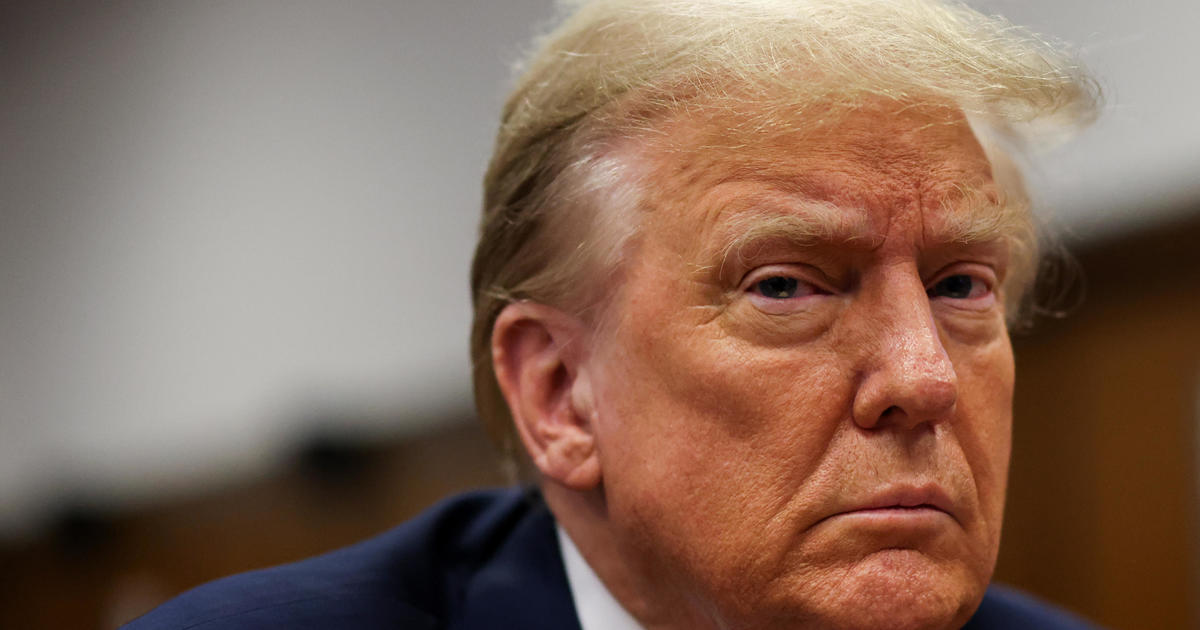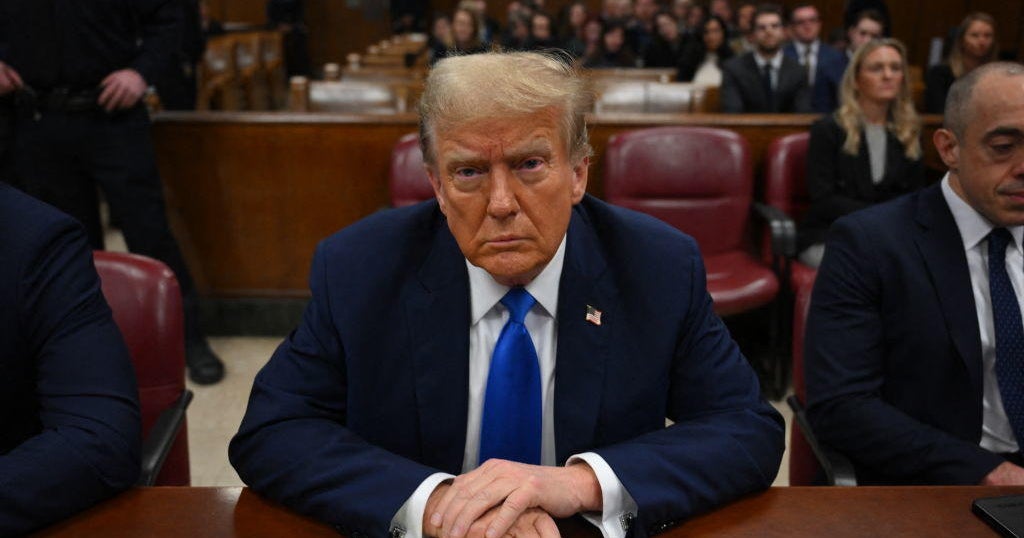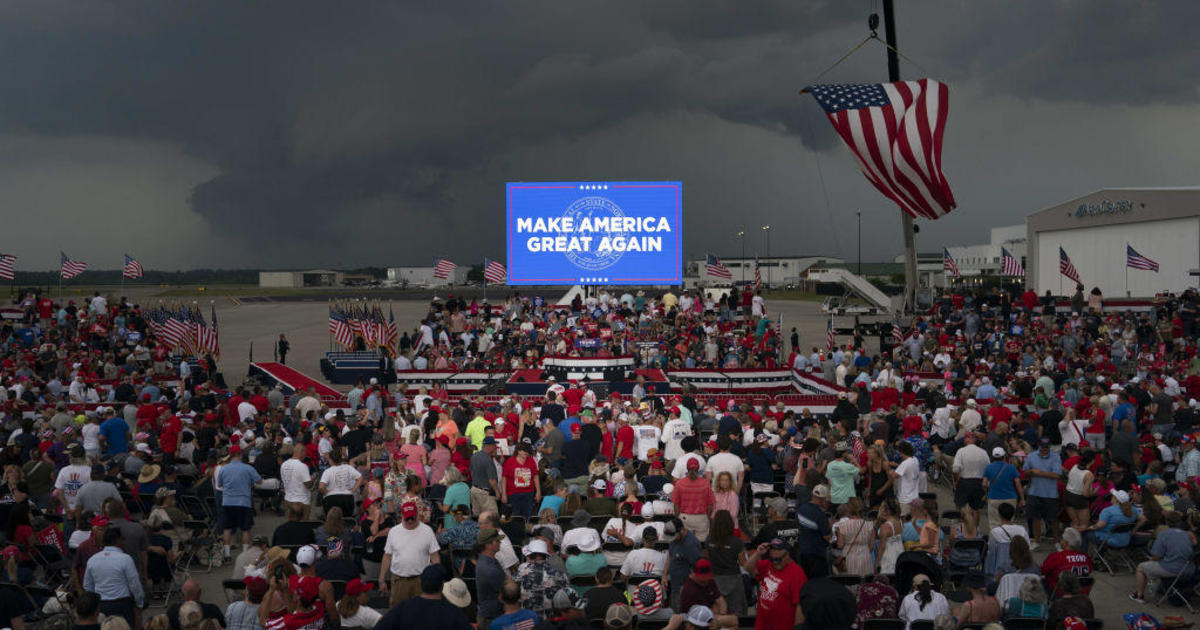Trump's 100-day economy: Few achievements so far
Donald Trump won the presidency by crusading against slow growth in the U.S.economy, as he castigated trade pacts and other culprits he accuses of damaging the American worker's well-being. At the 100-day mark, though, he hasn't scored any major accomplishments on the economic front, although it's not for want of trying.
The gold standard for the first 100 days was struck by Franklin Roosevelt, when he assumed the presidency in March 1933 with the nation mired in the Great Depression. Within that time span, FDR got Congress, which was controlled by his fellow Democrats, to set up New Deal programs to aid the millions of unemployed and impoverished Americans: welfare payments, farm subsidies and public works projects.
The situation is less dire in 2017 -- the jobless rate was 25 percent in 1933 and is 4.5 percent now -- but Mr. Trump strikes a chord by evoking, as he did in his inaugural address, "rusted-out factories scattered like tombstones across the landscape of our nation."
The difference nowadays is that, while the president's party also has congressional majorities, they are more fractious than in Roosevelt's day. And the opposition party has enough votes and enough animus against Mr. Trump that getting things done is immeasurably harder.
Meeting the Roosevelt standard has been rather difficult for his successors. Ronald Reagan took until July 1981 to get his signature tax cut through Congress -- and his Republicans ruled one of the two chambers, the Senate.
On Wall Street, which is informed by perceived prospects for the U.S. economy and corporate earnings, a lot of enthusiasm remains for Mr. Trump, even though he hasn't yet enacted anything major. "Based on the S&P 500's performance since Inauguration Day, Wall Street has awarded President Trump an A for anticipation, while Main Street likely gave him a B for benefit of the doubt," said Sam Stovall, CFRA's chief investment strategist for U.S. equities.
Because of Mr. Trump's pro-business bent, the market has surged since the election. Despite his administration's stumbles, the S&P 500 is up 5.5 percent since his swearing-in. According to Stovall, "the market is on track to post the third-best 100-day return of any first-term president since WWII, and the second-best under a first-term Republican."
That puts Mr. Trump behind only John F. Kennedy's 9 percent market increase in 1961 and George H.W. Bush's 7.7 percent in 1989. One of the worst showings was under Reagan in 1981, when the S&P 500 dipped 1.1 percent in the new president's initial 100 days, as doubt was rife he could deliver on his promises.
Here's how Mr. Trump has fared economically during his first 100 days:
Tax cuts. On Wednesday, the administration unveiled its tax plan, which includes huge tax rate cuts for businesses, down to 15 percent from 35 percent for corporations; reduced individual rates; and elimination of the estate and the alternative minimum levies. Although the plan was but a framework, sparse on details, it demonstrated the president's desire to kick-start the slow-growing economy.
With growth in GDP inching up at 2 percent or less annually for years (it went up a mere 1.6 percent in 2016), Mr. Trump has called for 5 percent expansions. That level, seldom seen since the late 1990s the tech boom, may be too ambitious, given sluggish U.S. productivity increases. Treasury Secretary Steven Mnuchin has suggested 3 percent as more realistic in the near term.
Regardless, the administration faces a lot of obstacles. For one, the plan is highly likely to drive up budget deficits, and a strong cohort of fiscal-minded Republicans with a lot of influence in Congress is leery about that prospect. One of them is House Speaker Paul Ryan (R-Wisconsin), whose favorite antidote to lost revenue from tax reductions has been what's called a border adjustment tax. This taxes imports but not exports and is projected to raise $1.1 trillion over 10 years.
But while the border tax would plug a hole left by the tax cuts, Mr. Trump is cool toward it.
The Committee for a Responsible Federal Budget, a nonpartisan group, estimates that the Trump plan would cost the Treasury $3 trillion to $7 trillion over a decade. Right now, the national debt stands at $13.6 trillion, and groups like the CFRB fear that the debt load will increase so much it will crush the economy.
Democrats also are massing to oppose a Trump tax cut, which they say favors the wealthy. "Trump's latest proposal is another gift to corporations and billionaires like himself," said Thomas Perez, the Democratic National Committee chairman.
Health care. The president's inability to get through changes in his predecessor's signature health law was an early defeat that he's seeking to reverse. A new version was slated to go before the House this weekend, in hopes of getting underneath the 100-day wire, but the Republican leadership postponed the vote because they still hadn't mustered enough votes to pass the bill.
Health care spending makes up almost a fifth of the economy, and medical costs have escalated relentlessly, although at a slower pace lately. With its aging population, the U.S. stands to devote even more resources to medical care in the future. So the stakes are large.
The health law is a visceral issue for many Republicans, who say Obamacare has distorted the nation's health system and is unworkable. Before this year, when Barack Obama was president, the GOP-controlled House voted to overturn Obamacare more than 50 times. This winter, with Republicans in firm control of both ends of Pennsylvania Avenue, party leaders in the House crafted a compromise bill to repeal and replace the Affordable Care Act, as Obamacare is known.
But they pulled the measure in March in the face of certain defeat in the House. The Freedom Caucus, the party's most vehement conservative bloc, objected that it didn't go far enough to lower insurance costs and to dismantle federal regulation of insurance products. At the same time, moderate Republicans were concerned that it eliminated federal insurance standards and lowered subsidies for buying private insurance -- and also were leery about pushing people off the system. The Congressional Budget Office figured that the bill would leave 24 million more Americans without insurance by 2024.
So Mr. Trump is pushing to resurrect the bill, and the latest iteration is designed to please the Freedom Caucus, which seems to be on board this time. For one thing, the measure would allow states to get waivers that would permit them not to cover so-called "essential health benefits" under Obamacare, such as maternity and mental health services. The question will be whether moderate Republicans can stomach this, and their qualms were what led to postponing a vote on the new version.
Trade. The president has considerably softened his tough stance against America's trading partners, particularly Mexico and China, which as a candidate last year he accused of cheating the U.S. and costing millions of Americans their jobs. During the campaign, Mr. Trump railed against the North American Free Trade Act, calling it "the worst trade deal ever."
But lately, he has backed off his threat to ditch NAFTA, an agreement struck in 1994 with Canada and Mexico. Instead, he has directed a federal study of abusive practices and has talked about renegotiating the pact.
By the same token, Mr. Trump used to say he would declare China a currency manipulator on "day one" of his administration. He condemned Beijing for artificially powering its currency exchange rate to make its goods cheaper in the U.S., putting American manufacturers at a disadvantage.
Since then, he has heeded others' counsel that China is actually trying to boost its currency, the yuan, to stem capital flight to other nations in search of better returns than at home. In a Twitter post, he has offered Chinese leader Xi Jinping a new trade deal that will be "far better for them if they solve the North Korean problem." How much leverage Xi has over the rogue state on his border is hard to tell, so this is a work in progress.
Meanwhile, Mr. Trump is readying possible retaliation against Canada involving its softwood lumber, which he believes is sold at below market value, giving Canadian wood producers a leg up in the U.S. market. After Washington studies the matter, it could hit those wood imports with a 20 percent tariff.
Similarly, the president has inveighed against Canada for lowering the price of American milk. These moves by Mr. Trump could signal a strategy of tackling trade issues one by one, rather than via broad deals.
Jobs. Economic trends are in Mr. Trump's favor, although how much credit he should take for good news on the employment front is arguable. Job creation has been robust for quite some time: Under President Obama, the nation had 75 straight months of job growth, a record stretch. In March, job growth slowed to 98,000, when economists expected to see 180,000 new positions added. The reason for the pullback has been ascribed to unusually harsh weather. The president can take heart that the unemployment rate is still low at 4.5 percent.
Mr. Trump's focus is on manufacturing jobs, which have dwindled -- down 5 million since 1998. Although 882,000 of these jobs have come back since February 2010, as the nation crawled out of the Great Recession, the manufacturing employment picture remains grim. The president pins the blame on unfair foreign competition, although many economists say rising automation is at least an equal villain.
One way for Mr. Trump to show progress is to highlight anecdotal victories where he has actually gained or saved jobs for specific Americans. He touts his jawboning efforts to convince several companies to keep factory jobs in the U.S. or expand them.
And indeed, employers like Ford Motor (F) and Lockheed Martin (LMT) have pumped up their domestic headcounts after Mr. Trump buttonholed them. In January, Ford scrapped plans for a new plant in Mexico and said it would add 700 jobs in Michigan for hybrid and electric cars. The same month, aerospace company Lockheed said it would increase its workforce in Texas by 1,800.
Critics, with some justice, have noted that these much-ballyhooed wins are a tiny fraction of the U.S. workforce, and no one can turn around broad trends with one-off efforts.
During the campaign, Mr. Trump regaled the crowds with how much he would get done in his first 100 days. Those goals have proved far tougher to attain that he imagined. Say this for Mr. Trump, however: He isn't the type to give up.



